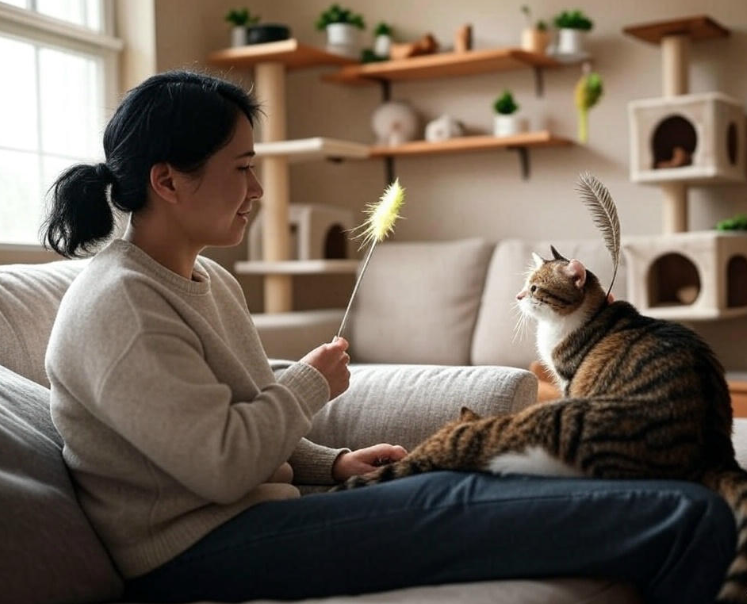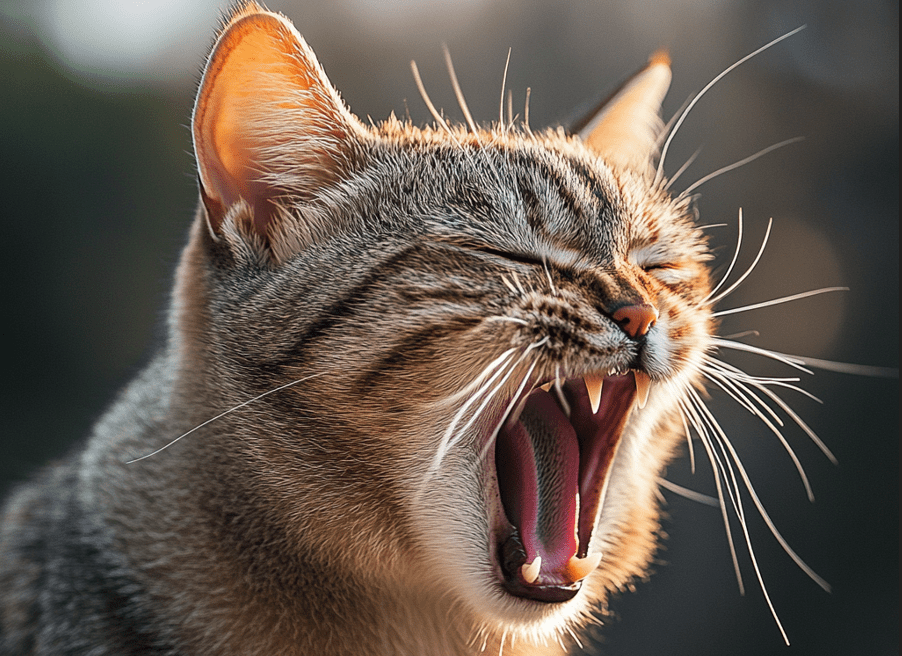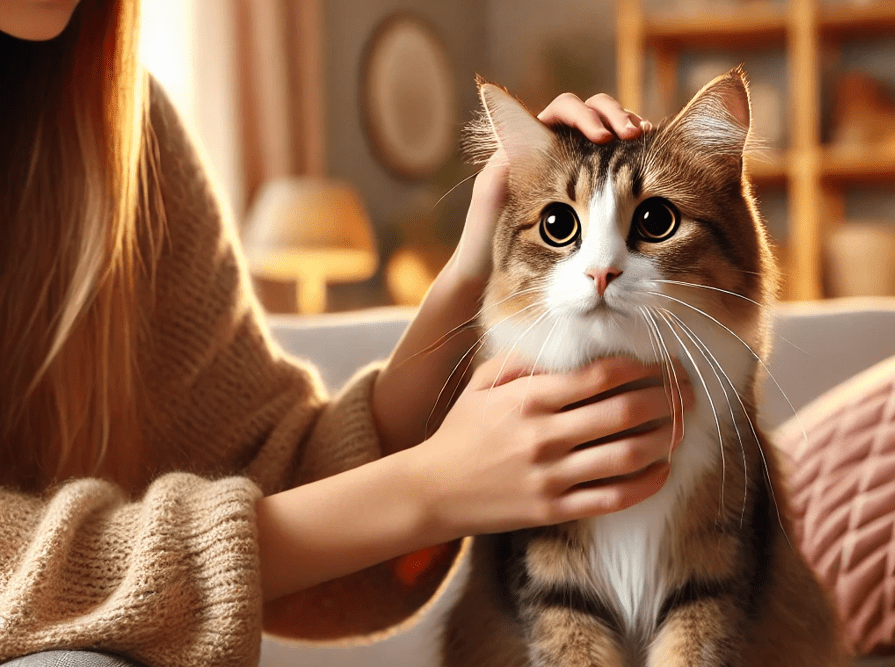
Picture this: One moment, your cat is curled up peacefully in your lap, purring contentedly. The next, without warning, their ears flatten, their pupils dilate, and suddenly—swipe!—their claws are out. Aggression in cats can be startling and even painful, but before considering sedatives or prescription medications, there are natural solutions for aggressive cats that can address the underlying causes without side effects.
Feline aggression is rarely random. Whether triggered by fear, territorial instincts, pain, or pent-up energy, hostile behavior is your cat’s way of communicating distress. While veterinary behaviorists may recommend drugs in extreme cases, many cat owners prefer gentler, holistic approaches to restore harmony in their homes. This comprehensive guide explores scientifically backed, drug-free strategies—from environmental adjustments to calming herbs—that can help transform an agitated, aggressive cat into a relaxed and content companion.
What You’ll Discover in This In-Depth Guide
The Root Causes of Aggression – Uncovering the hidden stressors, from medical issues to environmental changes, that may be provoking your cat’s outbursts.
Decoding Feline Body Language – Recognizing the subtle (and not-so-subtle) warning signs before a full-blown attack.
Behavioral Modifications That Work – How structured play, routine adjustments, and strategic space management can reduce tension.
Nature’s Calming Remedies – The safest herbal supplements, pheromone diffusers, and dietary tweaks to ease anxiety.
When to Call in the Experts – Identifying situations where professional intervention is necessary.
By the end of this guide, you’ll have a deep understanding of natural solutions for aggressive cats, empowering you to address aggression at its source—without relying on pharmaceuticals.
Why Is My Cat Suddenly Aggressive? The Underlying Triggers

Before attempting to modify your cat’s behavior, it’s crucial to understand why they’re acting out. Aggression is a symptom, not the problem itself. Here are the most common causes:
Fear or Anxiety: The Fight-or-Flight Response
Cats are highly sensitive animals, and sudden changes—like a new pet, loud construction noises, or even rearranged furniture—can trigger defensive aggression. A fearful cat may hiss, swat, or bite when they feel cornered, even if the perceived “threat” seems harmless to you.
Real-Life Example: Milo, a normally friendly tabby, began attacking his owner’s feet after a neighbor’s dog started barking loudly outside his window. The constant noise put him in a state of hypervigilance, causing him to lash out unpredictably.
Territorial Disputes: Guarding Their Domain
Cats are inherently territorial, especially in multi-pet households. Introducing a new cat (or even a visiting pet) can spark aggressive displays like blocking doorways, stalking, or outright attacks. Unneutered males are particularly prone to territorial aggression.
Pain or Undiagnosed Medical Conditions
A cat in pain may react aggressively when touched, even by a trusted owner. Conditions like arthritis, dental disease, or urinary tract infections can cause chronic discomfort, leading to irritability. Senior cats, in particular, should always be checked for underlying health issues if aggression appears suddenly.
Key Takeaway: If your cat’s aggression is new and uncharacteristic, a vet visit should always be your first step to rule out medical causes.
Redirected Aggression: Taking Frustration Out on the Nearest Target
This occurs when a cat is agitated by something they can’t reach—like a stray cat outside the window—and instead attacks whoever is nearby. It’s one of the most confusing (and dangerous) forms of feline aggression because it seems to come “out of nowhere.”
Play Aggression: When Hunting Instincts Go Too Far
Kittens learn to hunt through play, but if they weren’t properly socialized with littermates, they may not understand that biting and scratching hurt. Adult cats with excess energy may also “play” too roughly, pouncing on ankles or hands.
Reading the Signs: How to Predict an Aggressive Outburst

Cats rarely attack without warning. Learning their body language can help you intervene before a situation escalates:
Dilated Pupils – Wide, black eyes signal high arousal, whether from fear or excitement.
Ears Pinned Back – Flattened ears against the head indicate irritation or impending aggression.
Tail Twitching or Lashing – A flicking tail is a clear sign of growing agitation.
Hunched Posture or Arched Back – Defensive aggression often involves a puffed-up appearance to look bigger.
Hissing, Growling, or Spitting – These vocalizations are final warnings before an attack.
Pro Tip: If you notice these signs, avoid direct eye contact (which cats perceive as a challenge) and give your cat space. Distract them with a tossed toy rather than reaching toward them.
Proven Natural Solutions for Aggressive Cats
Environmental Enrichment: The Key to a Calmer Cat
Boredom and pent-up energy are major contributors to aggression. Indoor cats, especially, need mental and physical stimulation to prevent frustration.
Interactive Play Sessions – Dedicate at least 15–20 minutes daily to wand toys, feather teasers, or laser pointers to mimic hunting behavior. This helps burn off excess energy that might otherwise turn into aggression.

Vertical Territory – Cats feel more secure when they can observe their surroundings from above. Cat trees, wall shelves, and window perches provide safe vantage points.
Puzzle Feeders – Instead of free-feeding, use food-dispensing toys to engage your cat’s natural foraging instincts.
Case Study: A study published in the Journal of Feline Medicine and Surgery found that cats provided with climbing structures and interactive play showed a significant reduction in aggressive behaviors.
The Power of Routine: Stability Reduces Stress
Cats thrive on predictability. Sudden changes in feeding times, litter box locations, or household dynamics can heighten anxiety.
Consistent Feeding Schedule – Offer meals at the same times each day to create security.
Quiet Retreats – Ensure your cat has access to a low-traffic area (like a cozy closet or high perch) where they can escape when overwhelmed.
Pheromone Therapy: Chemical Calm for Anxious Cats
Feliway, a synthetic version of feline facial pheromones, can create a sense of familiarity and safety. Plug-in diffusers are particularly effective in multi-cat households or during stressful events (like moving).
Herbal and Natural Remedies
Certain herbs have mild sedative effects that can take the edge off aggression:
Valerian Root – Known for its relaxing properties, though some cats may become hyperactive instead.
Chamomile – A gentle option; try a cat-safe chamomile spray on bedding.
CBD Oil (Pet-Specific) – Emerging research suggests CBD may help reduce anxiety in cats, but always consult your vet first.
Important Note: Never use essential oils directly on cats, as many are toxic. Stick to vet-approved herbal supplements.
Controlled Socialization for Multi-Cat Homes
If your cat is aggressive toward other pets, reintroductions may be necessary:
Scent Swapping – Rub a towel on one cat and place it near the other’s feeding area to build familiarity.
Barrier Feeding – Have cats eat on opposite sides of a closed door, gradually moving bowls closer over time.
Diet’s Role in Behavior
Nutritional imbalances can contribute to irritability. Ensure your cat’s diet includes:
High-Quality Protein – Tryptophan (found in turkey and fish) supports serotonin production, promoting calmness.
Omega-3 Fatty Acids – Anti-inflammatory properties may help reduce stress-related aggression.
When to Seek Professional Help
While natural solutions for aggressive cats are effective for many, some situations require expert guidance:
Sudden, Unexplained Aggression – Could indicate pain or neurological problems.
Self-Destructive Behaviors – Excessive grooming or tail-chasing may signal severe anxiety.
Injuries to Humans or Pets – If aggression is causing harm, a veterinary behaviorist can design a tailored plan.
A Transformation Tale: How Oliver Learned to Relax
Oliver, a 5-year-old rescue cat, had a history of attacking visitors. His owners tried natural solutions for aggressive cats:
Vet Check – Confirmed no underlying pain.
Pheromone Diffuser – Installed near the front door to ease visitor-related stress.
Designated Safe Zone – Created a “Oliver-only” room with his bed and toys.
Positive Reinforcement – Rewarded calm behavior with treats when guests arrived.
Within months, Oliver’s aggression diminished. Now, he observes newcomers from a distance instead of attacking—proof that patience and natural methods work.
Final Thoughts:
Aggression in cats doesn’t have to mean a lifetime of scratched furniture or tense interactions. By understanding the root causes and implementing natural solutions for aggressive cats, you can help your feline companion feel secure—and reclaim peace in your household.
Start with environmental adjustments, introduce calming aids like pheromones or herbs, and ensure proper nutrition. If challenges persist, don’t hesitate to consult a professional. With time and consistency, most cats can learn to replace aggression with contentment—naturally.




